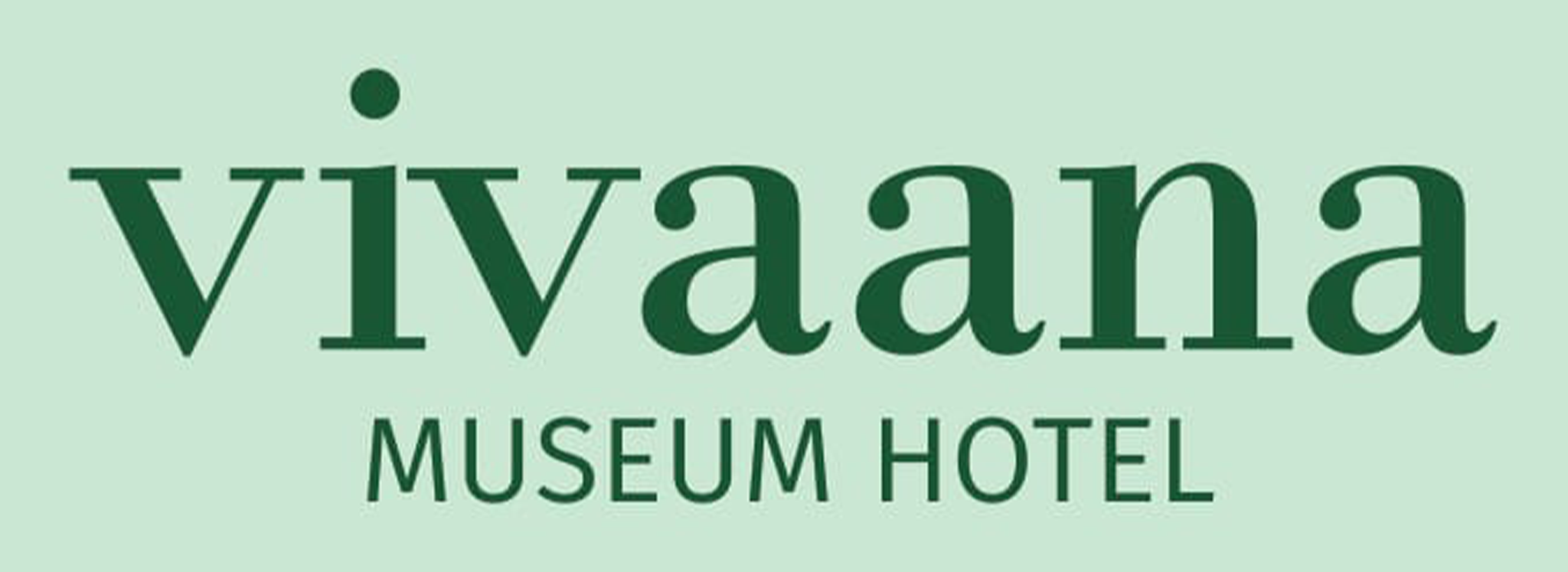Walkthrough Vivaana
Our beautiful haveli is waiting to welcome you!
Presenting images that serve as a teaser to the unforgettable experience that awaits you!
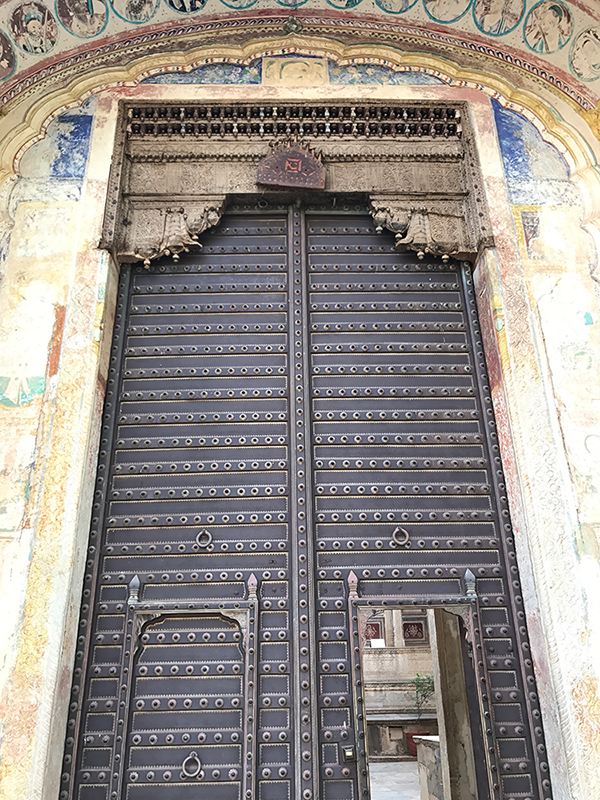
Buland Darwaza
The entrance door of old Rajasthani Havelis was a symbol of the owners’ status and position in society. More imposing and more elaborately decorated the entrance door, more the grandeur and standing in society. This Vivaana gateway with its tall and wide double doors is richly embellished with ornate brass work. The Low height of the Mori ensured that all the tall and proud Rajput and Marwari men would have to conform to the local custom of ‘dhok’ that requires bowing to pay respect. The curved overhanging roof houses an image of the Sun God and is flanked by portraits of European and Indian royalty. The front gateway is flanked by the chabutras generally to seat guards. On the inner side of the gate there are high rise Kothris which were used for both security reasons and also to welcome the guests with flowers and scented water. Fresco: The alcoves are beautifully painted with pastel coloured flower motifs inspired from the famous Indian epics.
The Courtyard
The entrance door leads into a wide open courtyard linking the baithak (reception) and the accounts room (Munim Khana). The courtyard is adorned with beautiful frescos & paintings inspired by Lord Krishna’s tales. The area has a very old tree of BAEL (golden apple, stone apple, wood apple) which is considered very auspicious in the Hindu religion.
The havelis of the Marwari traders were differentiated into two segments or courtyards called the Zanankhana and the Mardankhana. The outer one, being more public is meant for the men and is called the Mardankhana and the inner one being more private, was meant for the ladies to veil them from the eyes of the world, also called the Zanankhana.
The Entry is adorned by a beautifully crafted peacock door. The doors and frame are carved in teak and overlaid in iron and brass. They are also decorated with geometric patterns or carved with lotuses or lilies. The glass works on the walls another example of craftsmanship of the past.
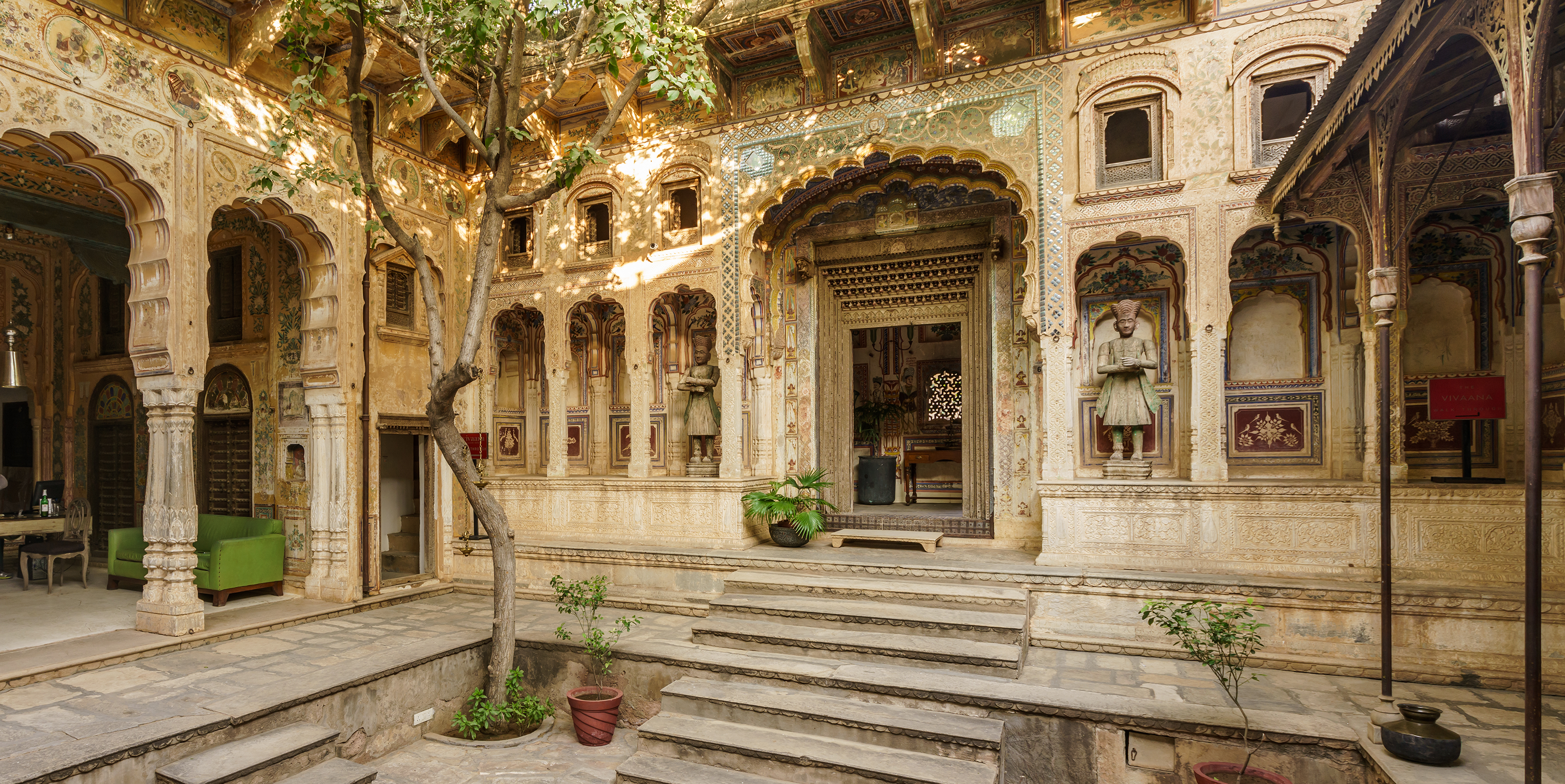
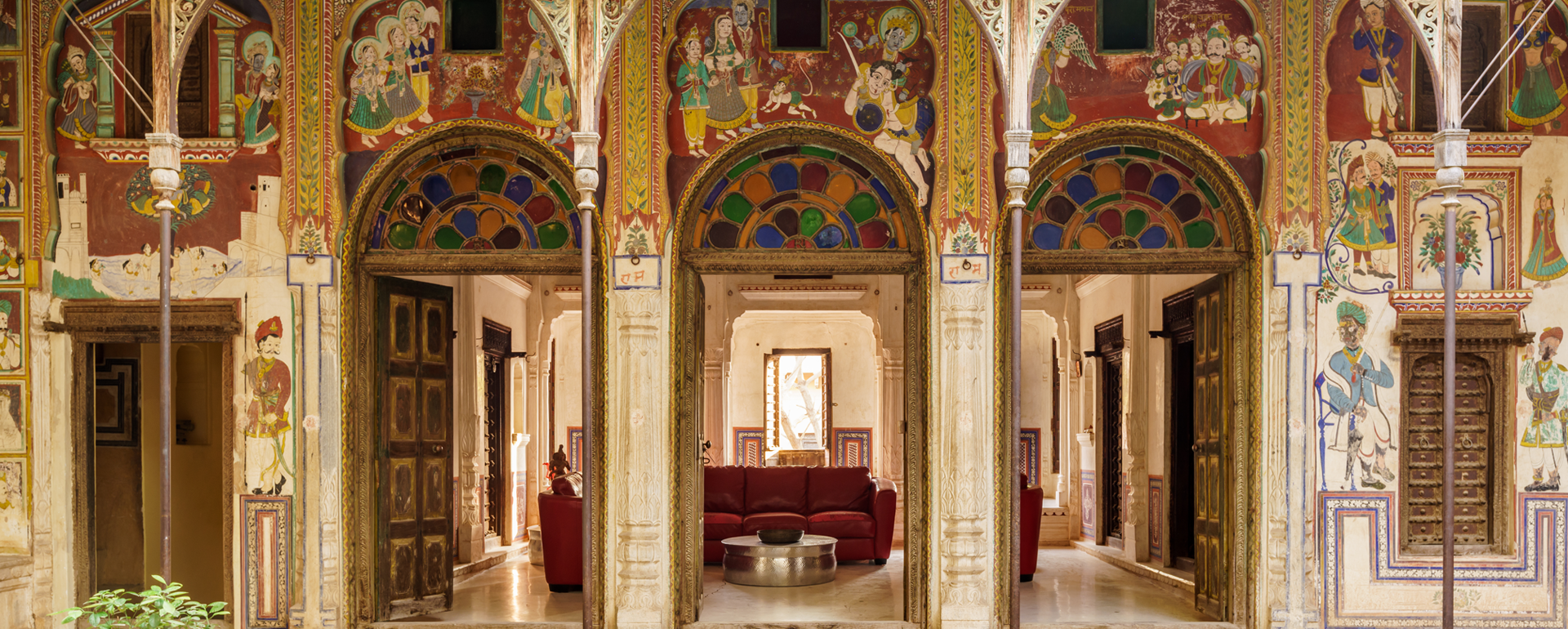
The Baithak
Baithak is the main reception room which was used to entertain visitors. The baithak was an airy and bright sitting area usually inhabited by the men folk. In case women had to be present, they were seated in the balcony which ran all along on the upper floor.
Zanankhana
This courtyard lined by rooms on three sides. This is the private area where the women would remain and is accessible only to the males of the family and highly privileged guests. The two Royal Rooms located in the courtyard are profusely painted all over with varied frescoes. The flooring of the rooms is done with fine glossy material. The rooms have spaces above where the musicians were seated and used to play music for the owners who reclined on the spaces below and enjoyed the performance.
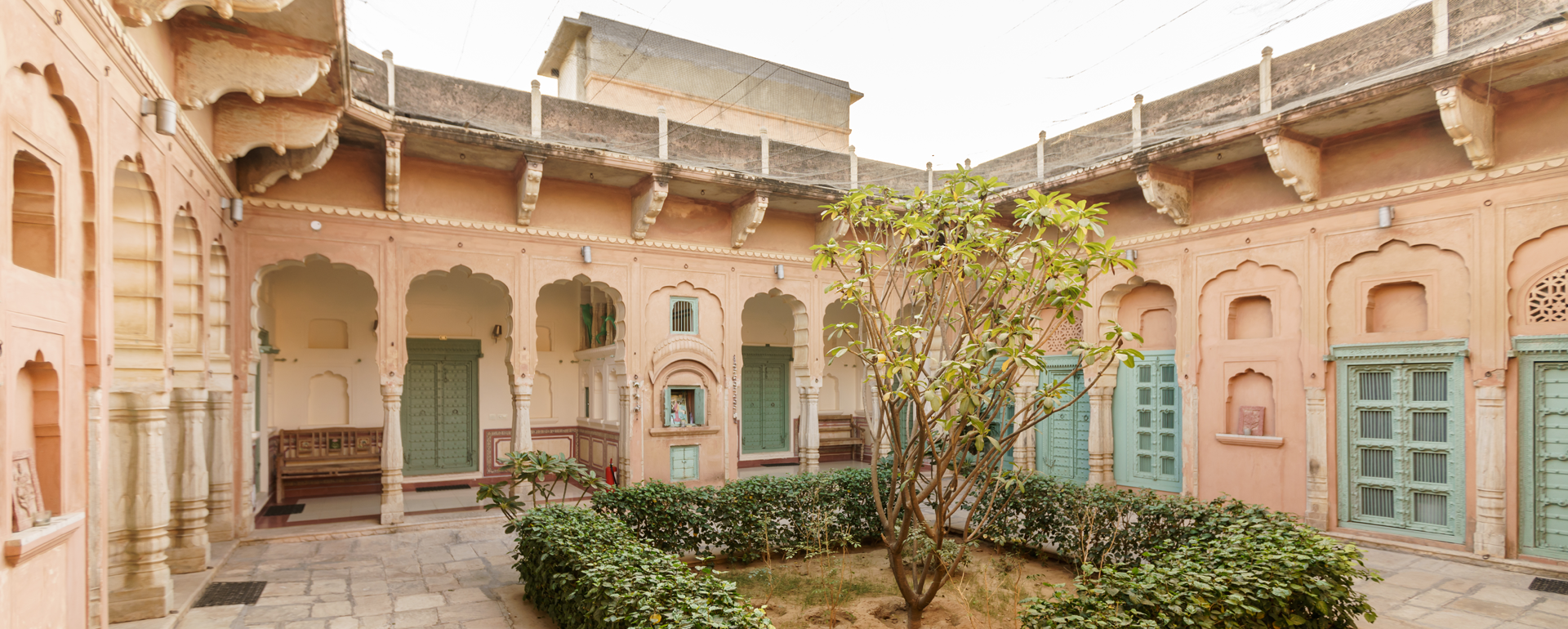
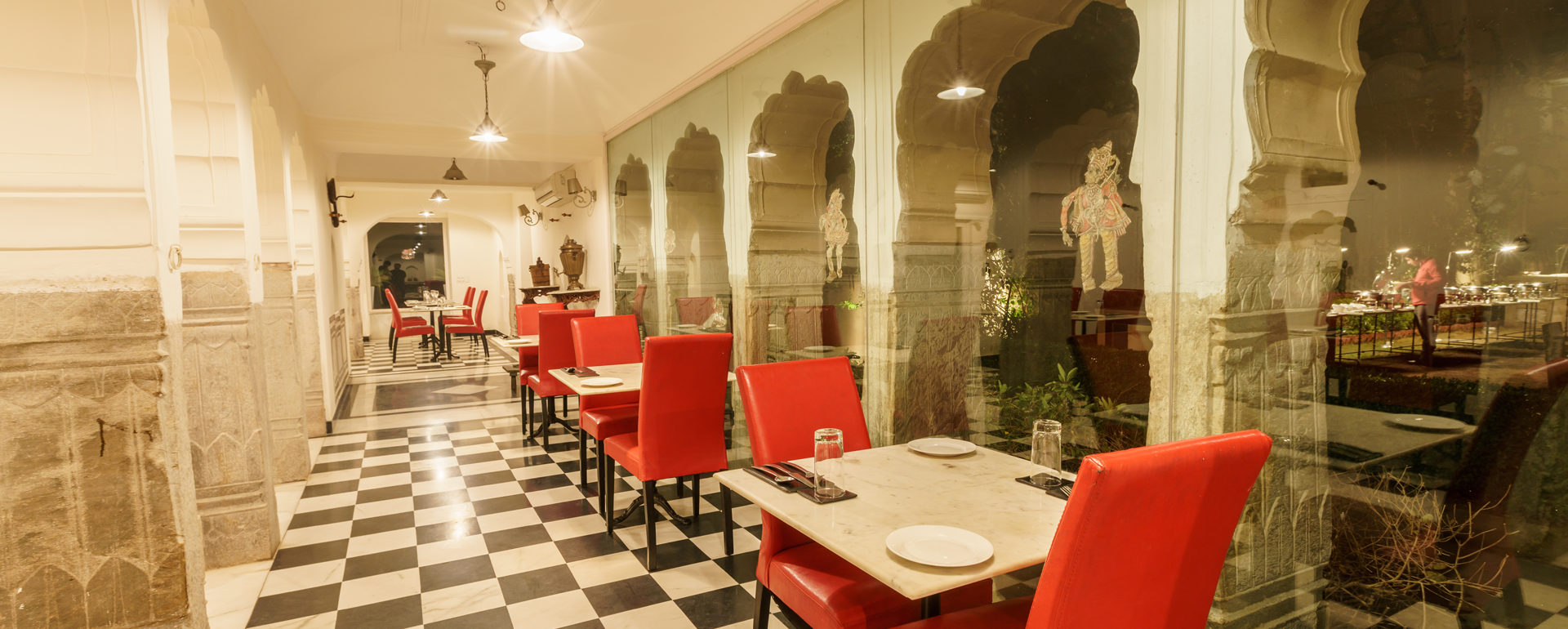
The Maalkhaana
This space where the restaurant stands today used to be the godown area of the Marwari family. It was divided into two parts with the larger area housing food stuff, grain and other consumables of the family (Maalkhana) and the smaller area was hidden which housed the jewellery and the valuables of the family (Tehkhana).
The Maze Courtyard
The Maze Waterway in the middle of the courtyard is a tribute to the amazing human ability to negotiate problems and came out free at the other end.
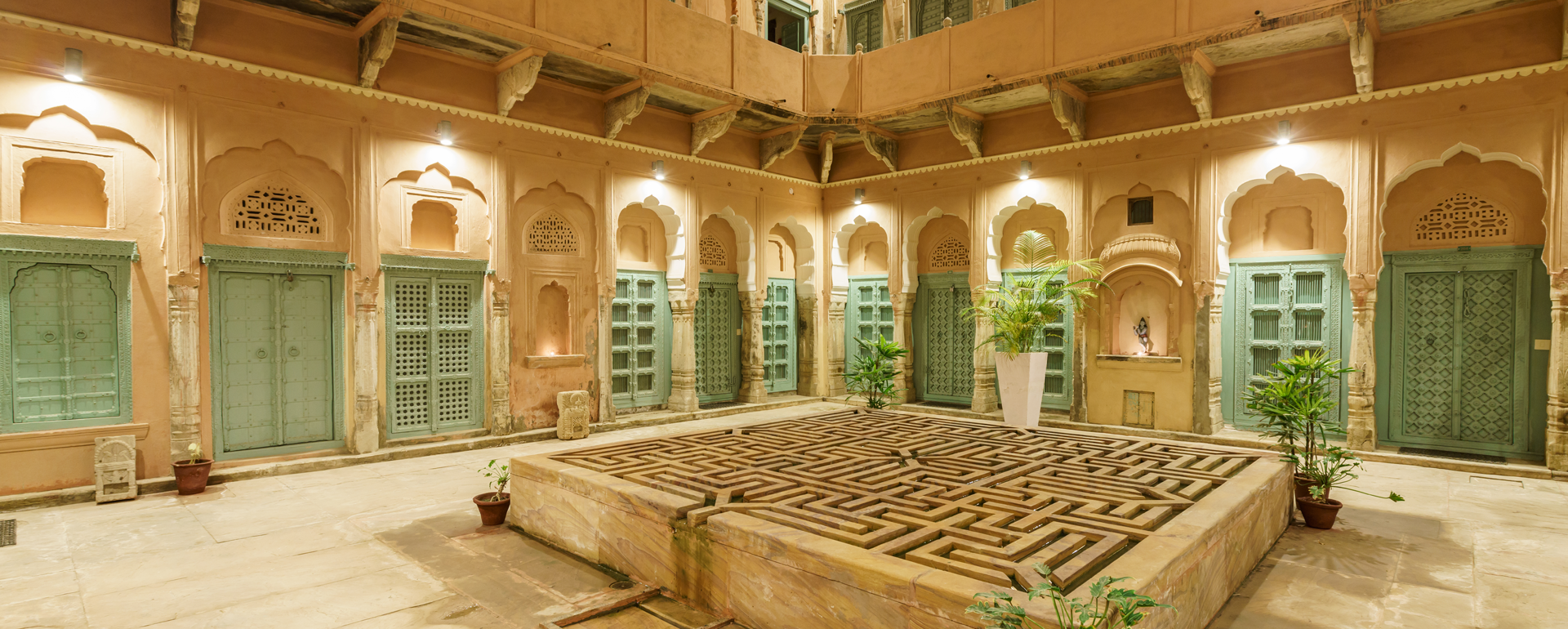
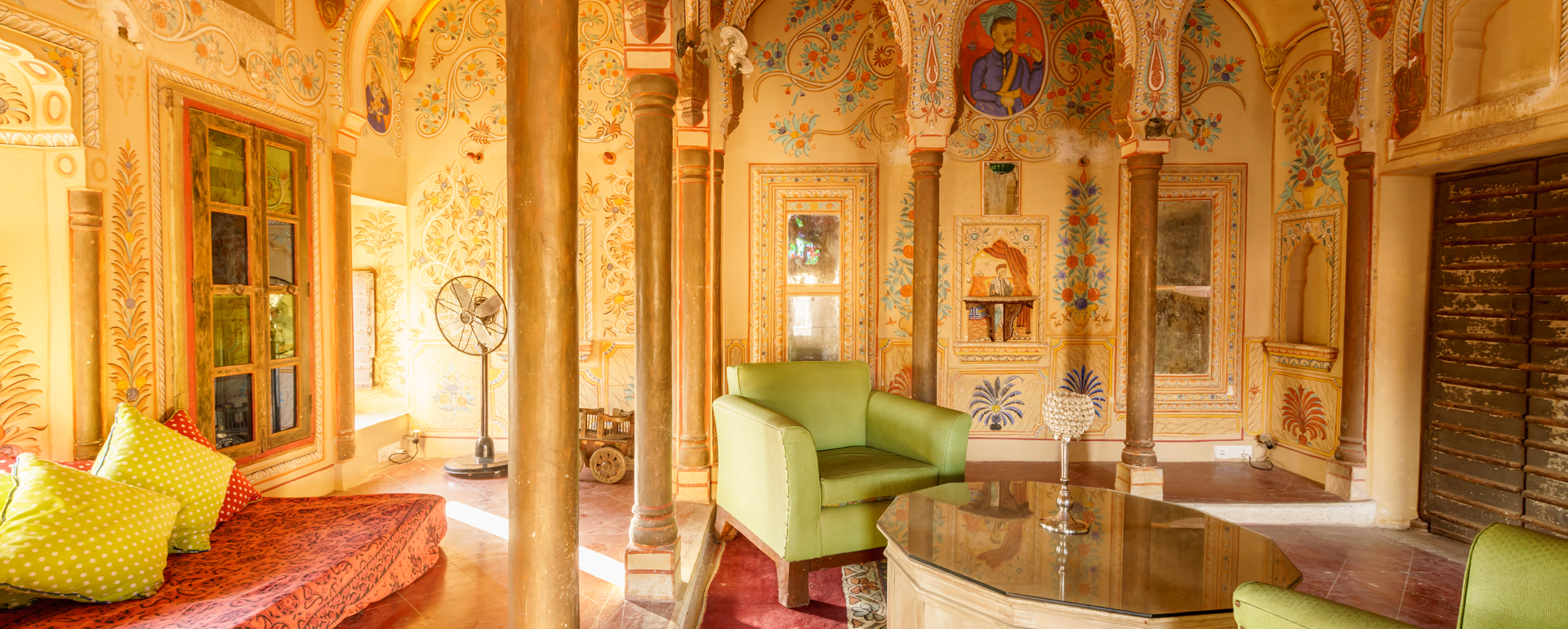
Fresco Lounge
Fresco Lounge is the vibrant area of the property with some of the most colourful and detailed paintings which are a treat to the eyes. The frescoes depict mythological and historical themes. The frescoes include images of Gods, Goddesses, and the life of Lord Rama and Lord Krishna. Adding a new dimension to the range of artistic styles at that time, we also find a colonial influence in some parts of the lounge.
The techniques employed for these frescoes were elaborate, and comparable to the Italian frescoes of the 14th century. The colours were mixed in lime water or lime plaster and were then made to sink into the plaster physically through processes of beating, burnishing, and polishing. All the pigments used were prepared with natural and primarily household ingredients like kohl, lime, indigo, red stone powder, and saffron.
The Mystic Donkey
Our mascot – The Indian Donkey – we salute the undying spirit and hard work of the Indian donkey.
While building Vivaana, the restoration work was a slow process and the one hardworking soul that always inspired us to keep going was the most underrated but overworked animal of the region-the Indian Donkey.

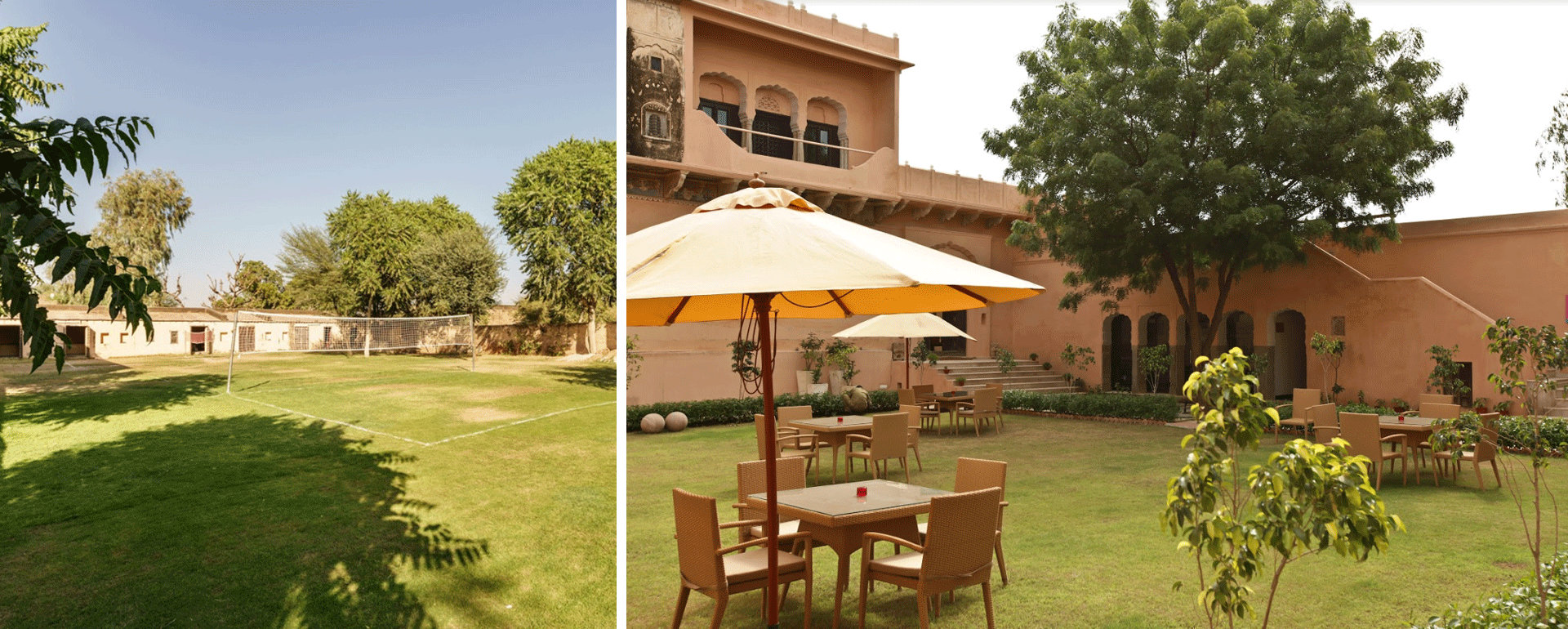
The Gardens
Beautiful manicured sprawling greens serve as recreational spaces and can transform into an outdoor dining space in the evenings.

